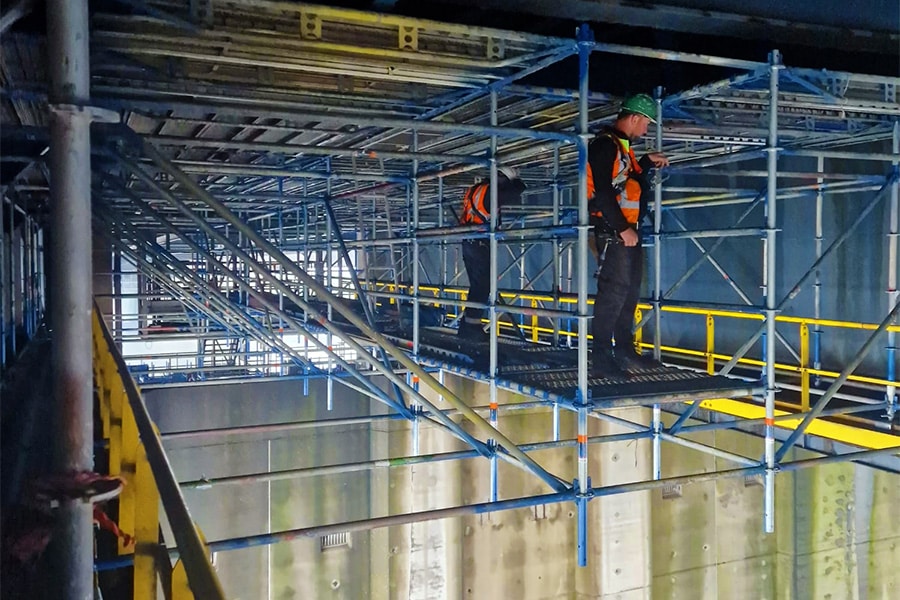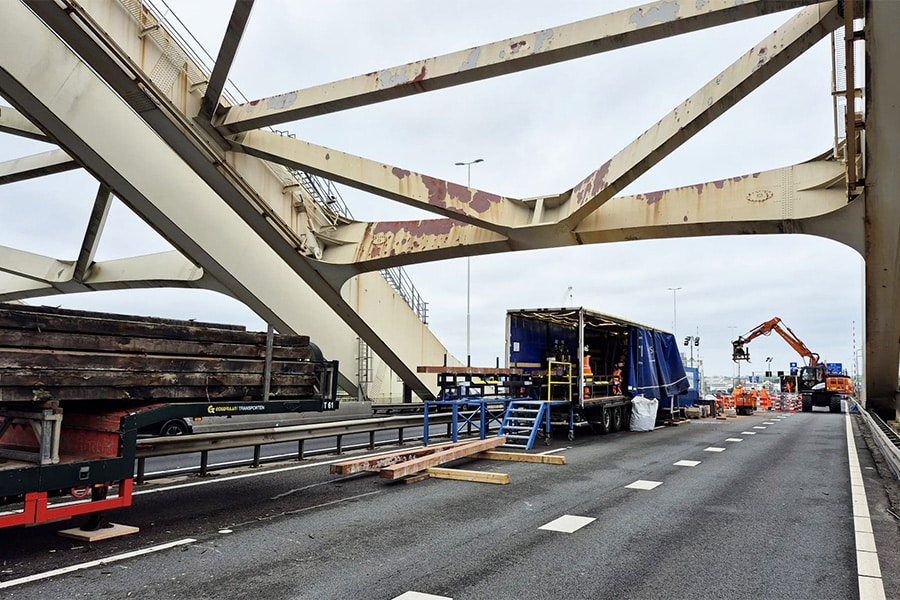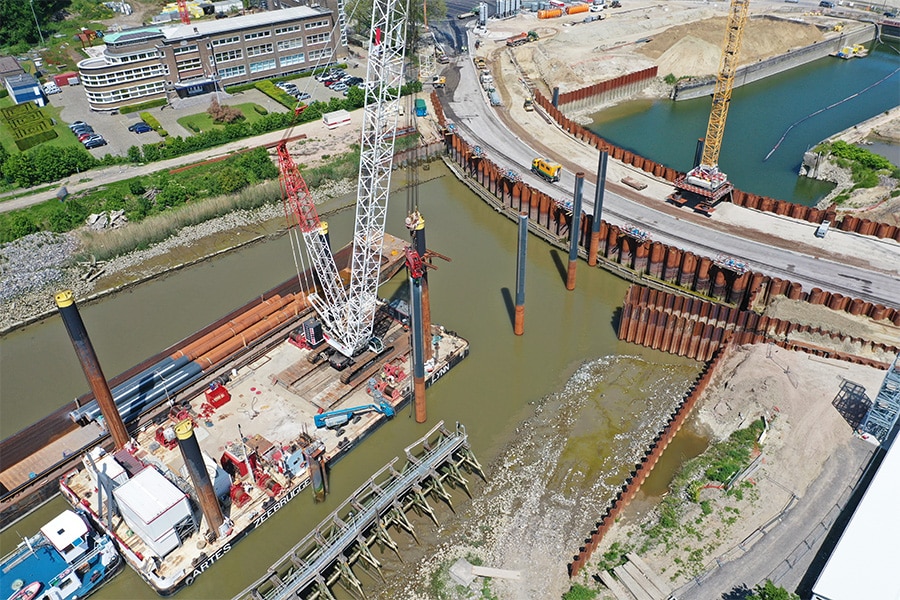
Impressive concrete construction for new Royers Lock
After more than a hundred years of faithful service, the Royers Lock in the Port of Antwerp was showing the necessary defects. The existing lock was also unable to cope with the ever larger ships passing through the complex. Reason enough for the Flemish government to replace the lock with a new and larger one. An enormously complex operation, which will take no less than seven years in total, with the construction site of the Oosterweelknoopp also just a stone's throw away. For the next two years, the focus will be on building the new lock's impressive concrete structure.
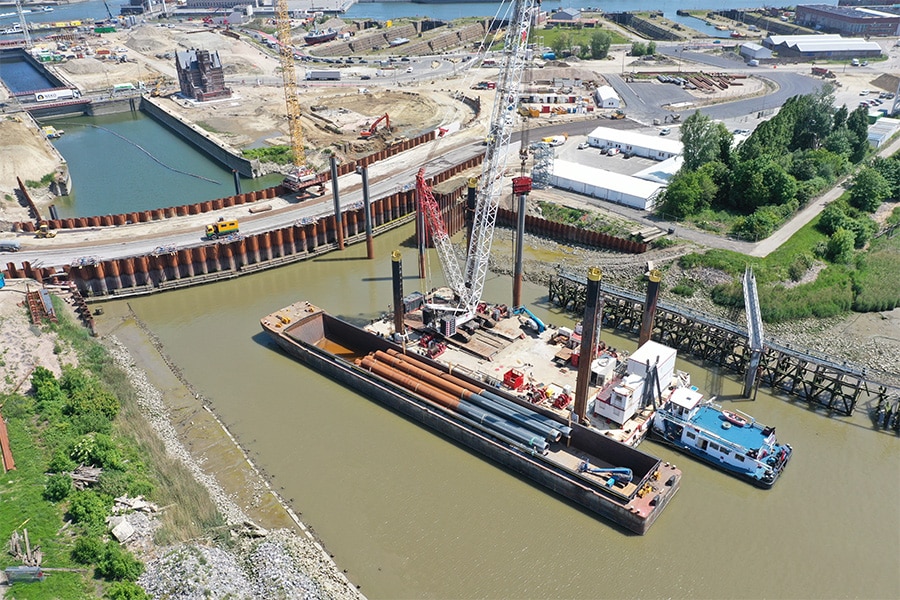
The Royers Lock is one of the most important locks in Antwerp. It is an important gateway for inland navigation and connects the Scheldt with the Albert Canal. "However, the old lock was in need of refurbishment," says Sofie Nullens, Royers Lock Project Manager at the Department of Mobility and Public Works. "The lock was outdated and suffered from major leakage losses, causing fresher times to be very long. Furthermore, the door and bridge functions were not duplicated. This ensured that not only vessel traffic, but also road traffic was inconvenienced when the lock broke down, which happened regularly. Finally, the lock was too small for the emerging 4-barge pushing traffic."

Engine of the Flemish economy
So plenty of arguments for a metamorphosis. And what a metamorphosis it will be! The existing lock will be completely replaced by a new lock that is longer and wider, so that modern inland navigation vessels can be transferred smoothly and safely, thus increasing the transport volume to the Albert Canal. "These works will help make Flanders' economic engine run more efficiently," says Nullens. The construction of the new lock is not the only project in the wider area. "The Royers lock has a lot of technical interfaces with the canal zone tunnel of the Oosterweel connection. This runs right past the upper head of the new lock, to which the roads of the new Oosterweel junction will soon connect. In order to limit disruption and benefit from economies of scale, we put the works out to joint tender and awarded them on price and quality to the Rinkoniên consortium. This consists of the Belgian companies Artes Group, CIT Blaton and Stadsbader and the Dutch companies Mobilis and Boskalis."
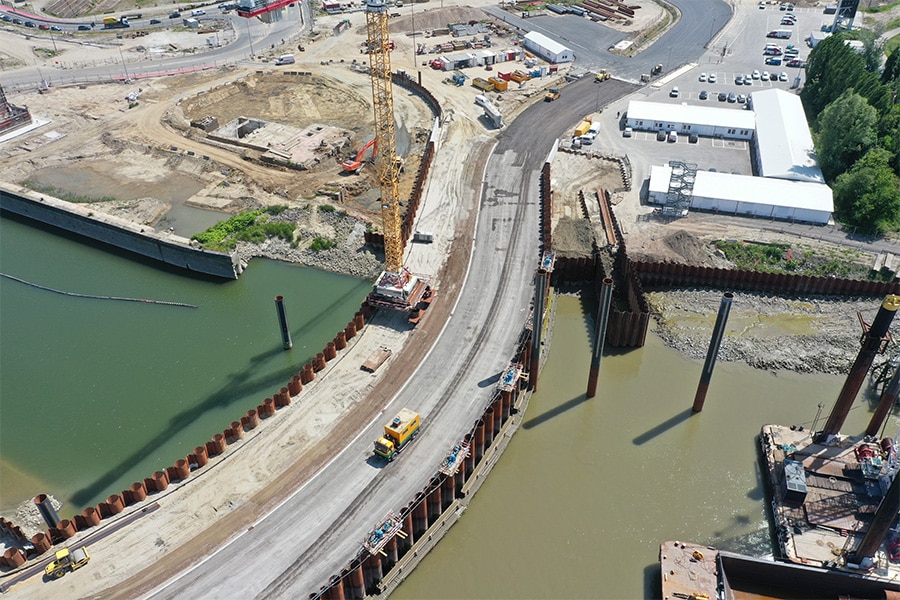
Detour
Work began in October 2021. By early 2029, the first ships will be able to pass through the new Royers Lock. This project was meticulously prepared. The works also have a major impact on shipping traffic. "We had to relocate a number of functions of the lock and, of course, the old lock was also completely demolished. Barge traffic is currently being diverted via the Boudewijn and Van Cauwelaert locks and the Berendrecht and Zandvliet lock complex. Both are large sea lock complexes, so not ideal for inland navigation. Moreover, the ships have to make a large detour. So there is every interest in getting the Royers Lock back into service as soon as possible." The preparatory and demolition work is now behind us. "We created a construction pit around the old lock to be able to carry out the demolition in the dry and excavate the construction pit for the new lock," says Ward Vertonghen, project director at combination Rinkoniên Royers Lock.
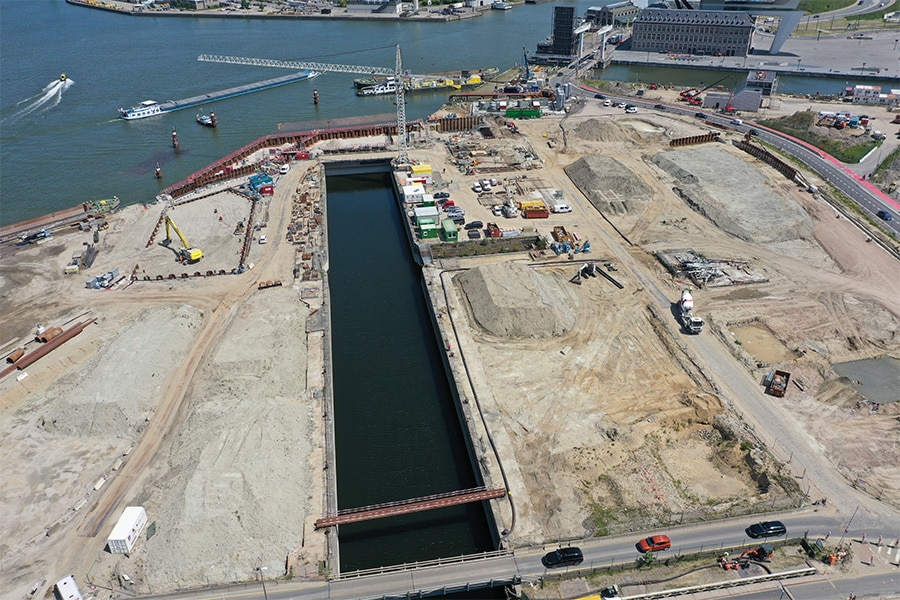
150,000 m³ of concrete
Creating the construction pit involves massive amounts of earth moving (more than 400,000 m³), which could fill nearly 6,000 large shipping containers. "The earthwork is in the final stage, and over the next two years we will focus mainly on the concrete work," Vertonghen continued. The new lock will be 36 meters wide and 235 meters long. The volume of concrete being pumped (over 150,000 m³) is comparable to filling more than sixty Olympic-sized swimming pools. In addition, over 25,000 tons of reinforcement will also be involved. "In parallel with the concrete construction, we are also busy preparing the steelwork and all the mechanical parts, for which the necessary collapsing provisions must be made. The lock will have a steel roller door on either side, weighing 1,000 tons on the Scheldt side and 600 tons on the dock side. The door on the Scheldt side is higher, due to the higher water level, and therefore heavier. In addition, there will be two virtually identical movable bascule bridges for road traffic across the lock."
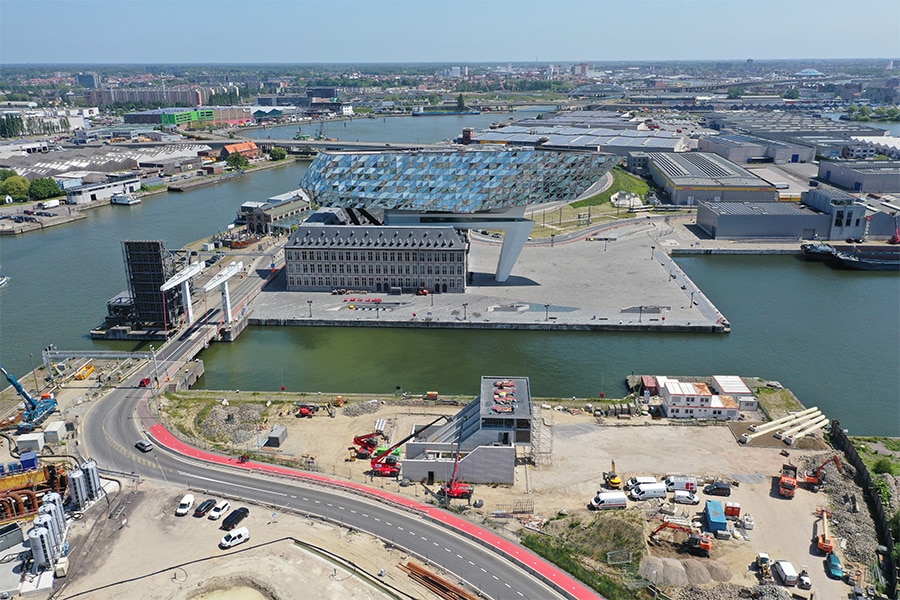
Wheelbarrow principle
According to the current schedule, the concrete construction will be largely complete by early 2027. "Then we can backfill and start flooding the lock," Vertonghen explained. "Then the doors and bridges will be installed, which will be built in parallel at Victor Buyck. The doors follow the wheelbarrow principle with a lower and upper roller car on a rail that is pulled in and out of the door chamber with winches from the machine building. In turn, the door chamber can be completely dry for maintenance on the doors."
Nullens adds: "The doors are 10 meters wide and can also be used by cyclists and cars to cross the lock in case of emergencies, should both bascule bridges be out of service. The bascule bridges are of course wider with two directions for road traffic and a mixed pedestrian and bicycle path 4 meters wide. There is therefore plenty of consideration for the vulnerable road user."
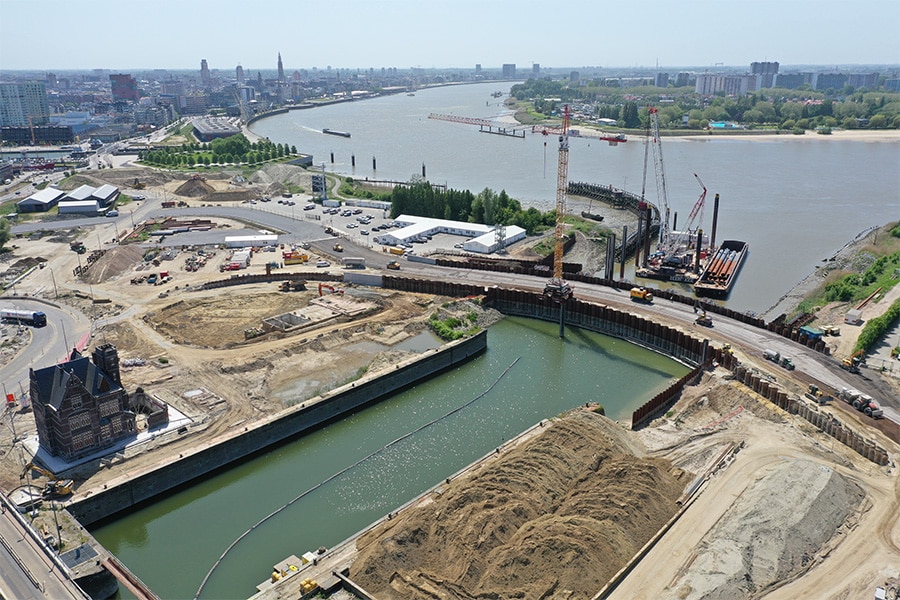
Lock master's house
Special attention in the project also goes to the former lock master's house. "That now stands on an isolated island in the middle of the large construction pit. The house has been protected heritage since 2001 and will be integrated into the new design to preserve the link with the past," Nullens said. "The nautical command of the new lock will soon be housed in the house." Says Vertonghen, "The dwelling is set on a stable diaphragm wall construction and propped up so that it will not be affected by the structural work on the lock. Once the lock is built and backfilled, we will restore the house, preserving as many historical elements as possible, such as the interior walls, stairs, floors and even the fireplace. Separately, we are also building two machine buildings for the technology of the lock gates and a central technical building."
Finally, worth mentioning is the self-closing mobile flood barrier. "Should the Scheldt gate be open and fail during a huge storm, Antwerp is not protected against extreme high water via the lock," Nullens explains. "To deal with that, a self-closing mobile flood barrier will be incorporated into the lock platform." General completion of the new Royers Lock is scheduled for the end of 2028, after which the first barges will be able to pass through the new lock in early 2029.
